One of the most popular recipes I’ve shared at gluten free food expos is my gluten free baguette recipe. It draws a crowd every time. The smell of fresh-baked yeast bread, the classic crust, the crunch on the outside with the pillowy soft centers … I haven’t met anyone yet (gluten free or not!) who didn’t think this gluten free baguette was incredible.
There are THREE ways to make this gorgeous gluten free baguette:
- Using my From-Scratch Gluten Free Baguette Recipe posted here (or click Jump to Recipe at the top of the page to skip right to it)
- Gluten Free Baguettes made with my gfJules Gluten Free Bread Mix (click here to jump to this recipe) and it’s vegan!
- Gluten Free Italian Loaves/Baguettes with my gfJules Gluten Free Pizza Crust Mix (click here to jump to this recipe)
Secrets to Baking Gluten Free Baguettes
Over the years I’ve devised a few gluten free baguette making SECRETS which I’ll share with you (since we’re friends) to help get this gluten free French Bread just right. But it all starts with the gluten free flour. Aside from water, it’s the primary ingredient, so you know it’s got to be right. (Don’t miss out on the ingeniously simple technique I show in a quick video, so keep scrolling!)
There are a couple easy ways to bake up heavenly bread like this beauty. One is to use my gfJules Pizza Crust Mix. I know it sounds crazy but it’s a no-fail, so-easy-you-could-make-it-every-night critical ingredient.
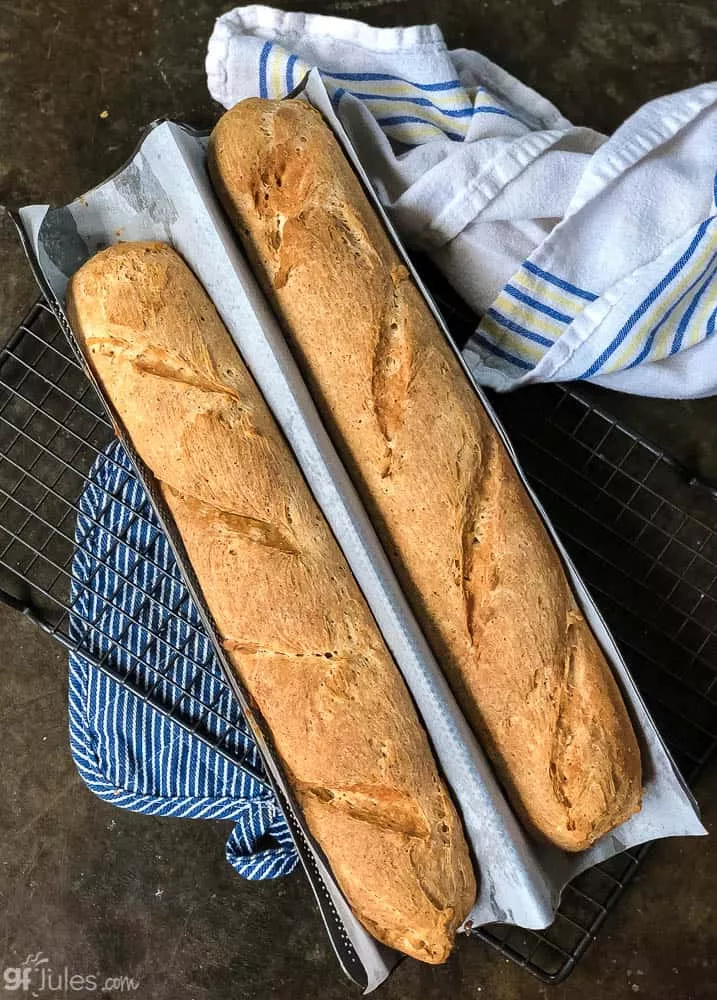
The gluten free Italian loaf / baguette recipe using my gfJules Pizza Crust Mix has the unmistakable herbs of your favorite Italian recipes baked in, plus the soft bread and old world crust combination we all love. (This recipe is easily doubled, by the way, just use the entire gfJules Pizza Crust Mix and have enough to share!)
Another version is made with my gfJules Gluten Free Bread Mix — with this updated mix, you don’t even need a pan or eggs!
Using one of these mixes is the most reliable way to get this delicious bread to work, since milk powders with the scratch version differ and produce varying results.
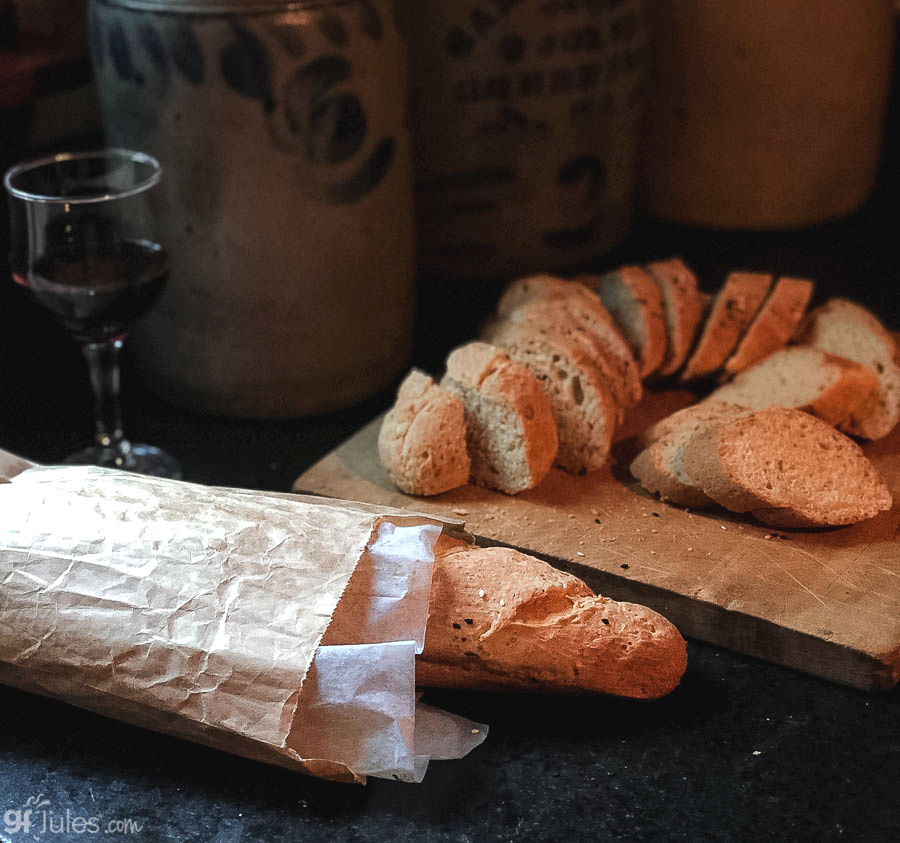
But you can always bake these gluten free baguettes from scratch with my gfJules Flour, simply follow the recipe below.
You can see from the photo below that the texture is light, with nice air pockets throughout. It’s a great way to get homemade bread quick! Only 20-30 minutes to rise and 20 minutes to bake — how’s that for a win-win?
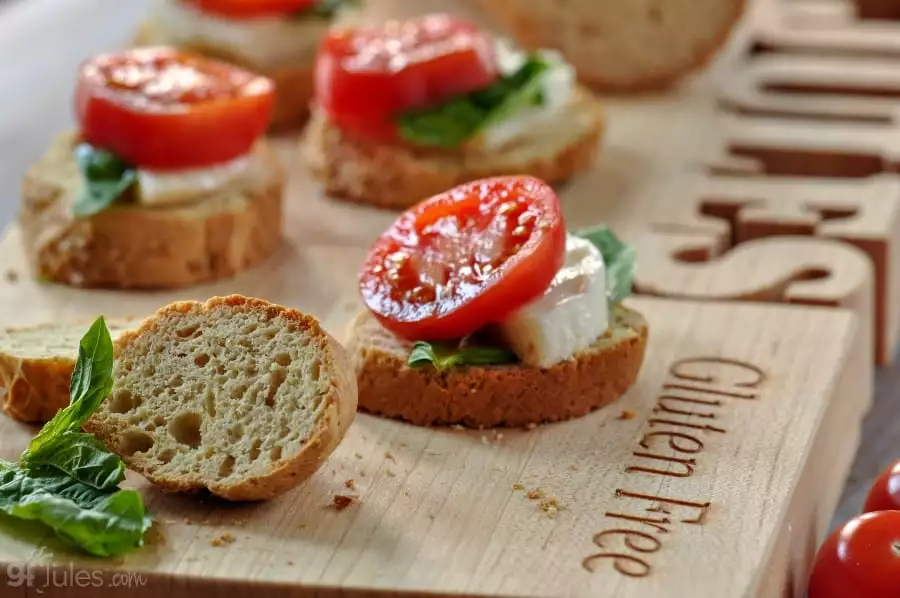
There are other things you can do to help if you’re baking from scratch, though. The easiest trick is to hand spritz with a spray bottle of water and to place a baking sheet on the bottom rack of your oven with ice cubes on it to continually add steam to the oven during the bake.
You need a clean spray bottle and you’ll want to spritz, spritz, spritz throughout the baking process by peeking into your oven without letting too much heat out if you want your baguette to be more crunchy. Brushing with egg wash (1 full egg mixed with 1-2 Tbs. water) will also help to make the outside crunchier and nice and brown.
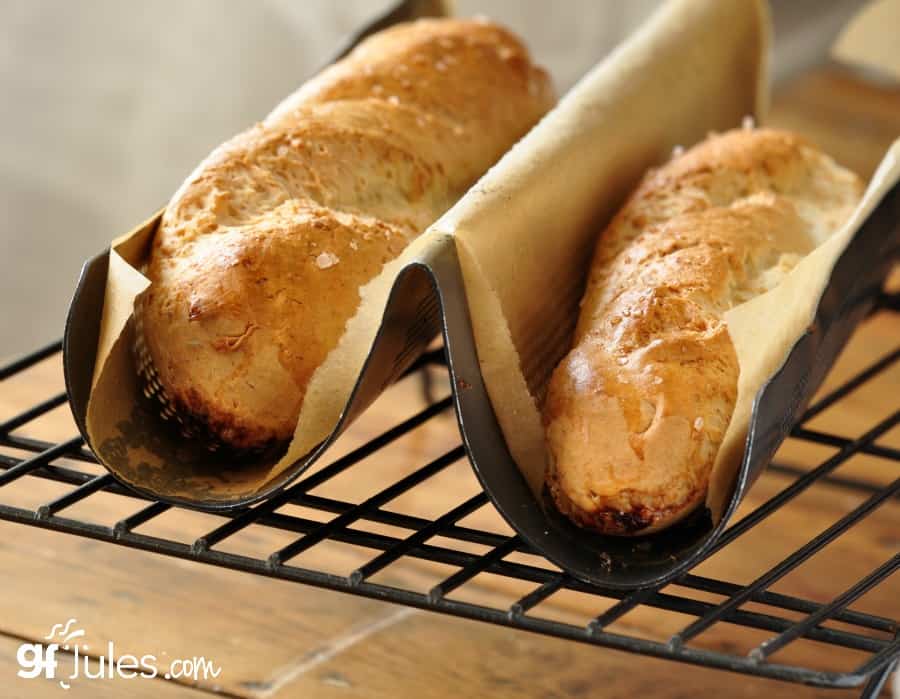
If you’d prefer to make a softer loaf, don’t spritz, and cover the bread during the second half of the bake time with foil to keep it soft all the way through.
A third secret is the method. Take a moment to watch my quick video to see just how easy it is to make a beautiful baguette without even getting your hands dirty! (This is the method you’ll use if baking from scratch or with my gfJules Gluten Free Pizza Crust Mix)
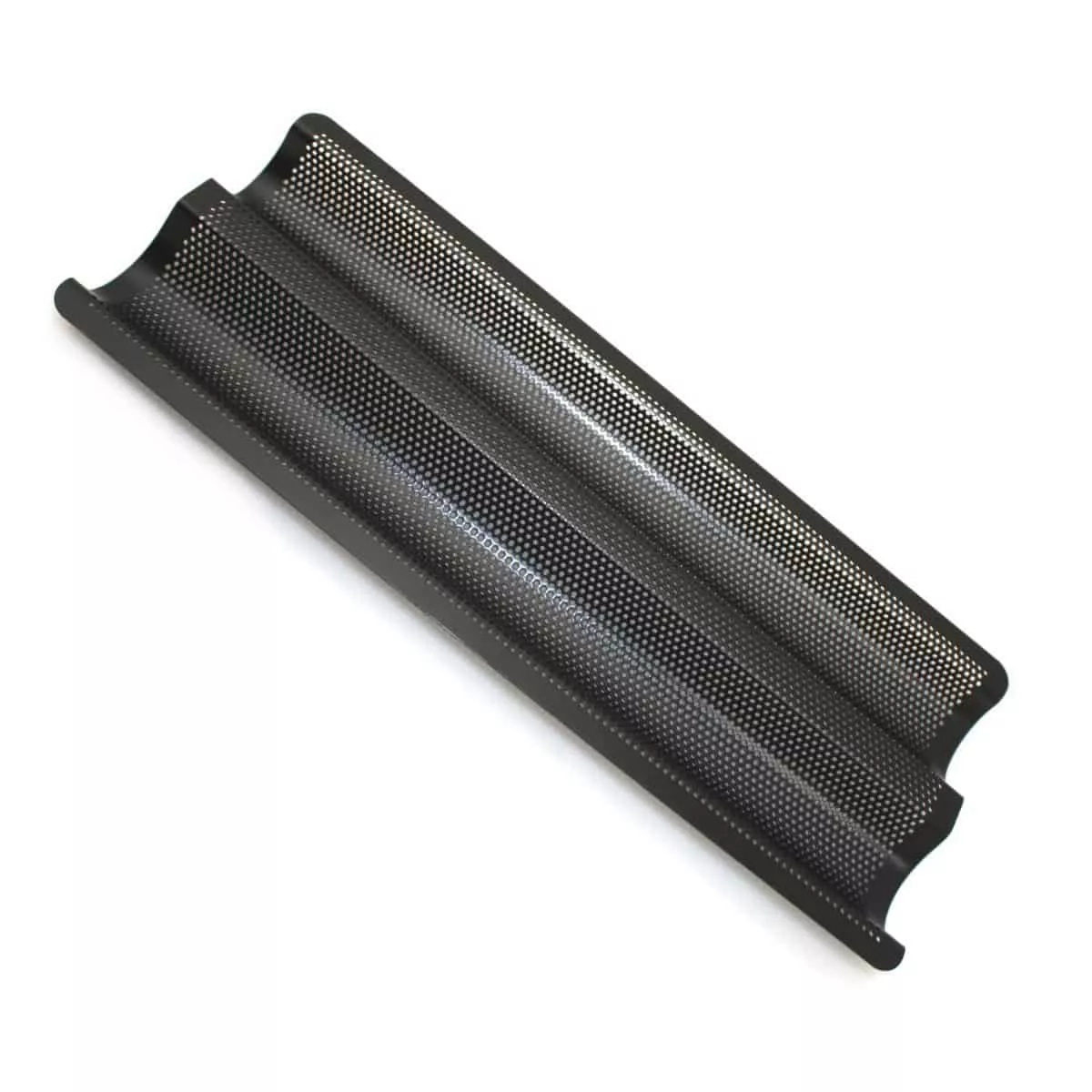
I suggest using a baguette pan for the best results when making from scratch or my original gfJules Gluten Free Pizza Mix, but you can use a cookie sheet lined with parchment in a pinch; the crust just won’t be as crunchy and it won’t be as nicely rounded, but it will still taste yummy!
So go forth and bake baguettes like a pro! In France, it’s routine to buy a fresh baguette every day — now you can make a gluten free one, easily!
What are you waiting for? Delicious bread is calling!
Gluten Free Baguette Recipe
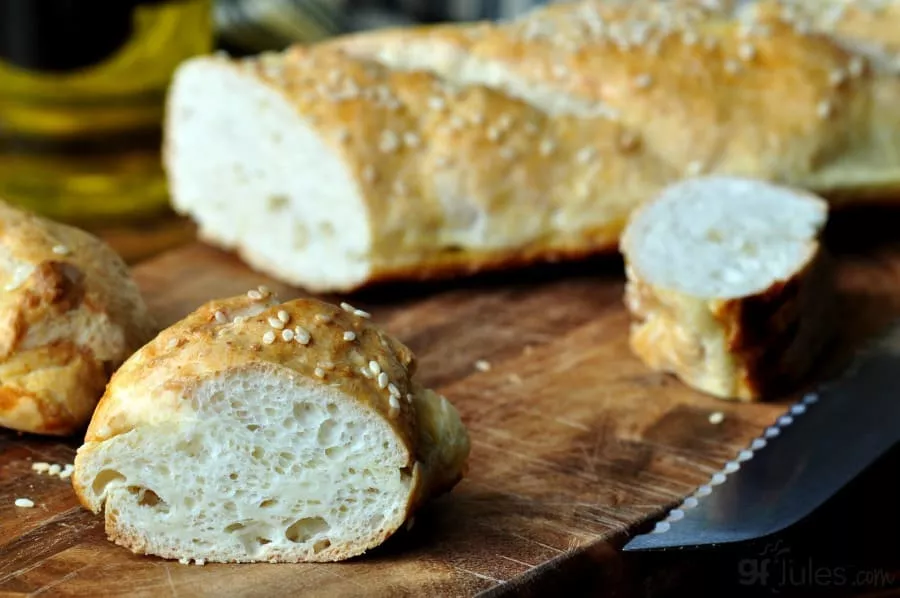
Gluten Free Baguette Recipe
Ingredients
- 1½ cups (202 grams) gfJules All-Purpose Gluten-Free Flour
- 3 Tbs. (12 grams) milk powder, dairy or non-dairy (like coconut milk powder) OR plain GF potato flakes
- 1 ½ Tbs. (19 grams) sugar (optional, but add for crunchier crust)
- ½ tsp. salt
PLUS
- 2 egg whites room temperature (OR 4 Tbs. aquafaba OR 1 Tbs flaxseed meal or chia seed steeped in 4 Tbs warm water)
- 2 Tbs. extra virgin olive oil
- ½ tsp. apple cider vinegar
- 10 Tbs. (148 grams) warm water
- 2 1/4 tsp. rapid rise yeast gluten-free (1 packet) ** (for yeast-free directions, scroll to the bottom of the recipe)
- egg wash (full egg + 1 Tbs. water) to brush onto the dough (optional) OR more oil
- water to spritz onto dough
- toppings of choice (optional)
Instructions
- Whisk together dry ingredients except yeast; set aside.
- Combine egg whites, olive oil, cider vinegar and most of the water in a large mixing bowl.
- Using a stand mixer (preferably), slowly add in the dry ingredient mixture and yeast.** Gradually add remaining water to get a firm but very sticky dough.
- Beat on high for an additional 2-3 minutes. (Note: this recipe may be mixed by hand in a large bowl, using a fork or wooden spoon – stir until well mixed!).
- Prepare a baguette pan or baking sheet by lining with parchment and lightly oiling.
- Pour one teaspoon of olive oil into a gallon sized zip-top bag and spread around so the inside is coated. Cut a one-inch corner out of the bag. (see video)
- Scoop the dough out into the bag and squeeze dough toward the cut corner. Squeeze evenly so that the dough comes out of the corner of the bag and pipes down the length of the baguette pan or across the cookie sheet. If doubling the recipe, repeat the process until two baguettes are formed.
- Brush with egg wash or liberally brush with more oil. Use a sharp knife to cut across the tops diagonally 3-4 times so that the dough will rise evenly and spread open at the cuts. Sprinkle any additional toppings at this point.
- Lightly oil a sheet of parchment and lay on top of the baguette. Place in a warm place like an oven preheated to 200° F then turned off. Allow the baguette to rise for 20-30 minutes. Remove from oven to preheat to 500° F (static).
- Place a cookie sheet on the bottom rack in the oven and put ice cubes on the pan to create steam in the oven. (optional)
- Remove parchment covering the baguette and spritz with water for crunchiest crust. Place baguette on middle rack of the oven and bake for 5 minutes, spritzing again, and adding more ice cubes. Also reduce oven temperature to 475° F, baking for 15-20 more minutes (depending on baguette size). Spritz again during the bake for the crunchiest crust.
- Check by sticking a toothpick into the center of the baguette. If it has wet dough stuck to the toothpick when removed, bake for another 3 minutes, then check again until the toothpick comes out nearly clean or with dry crumbs attached. Internal temperature should have reached 205° F.
- The cooking time may vary depending on whether using a baguette pan, but when done, the baguette should be browned (more, if using egg wash to brush on top) and be crunchy when tapped.
- Remove to fully cool before slicing.
Video
Notes
** Yeast-Free Gluten Free Baguette Directions:
Add 2 tsp. vinegar + 2 tsp. baking soda + 2 tsp. baking powder. Chef Patrick Auger also recommends using club soda in place of the water in this recipe when baking yeast-free.** Please keep in mind that nutrition information provided is per serving, which may vary. While we have taken care to provide you with the most accurate nutritional values possible, please note that this information may differ significantly depending on the exact ingredients and brands that you choose to use to make this recipe. Additionally, where options are given for ingredients, the resulting calculation may include all ingredient options instead of only one per line, skewing the totals significantly.
Pin it for later!
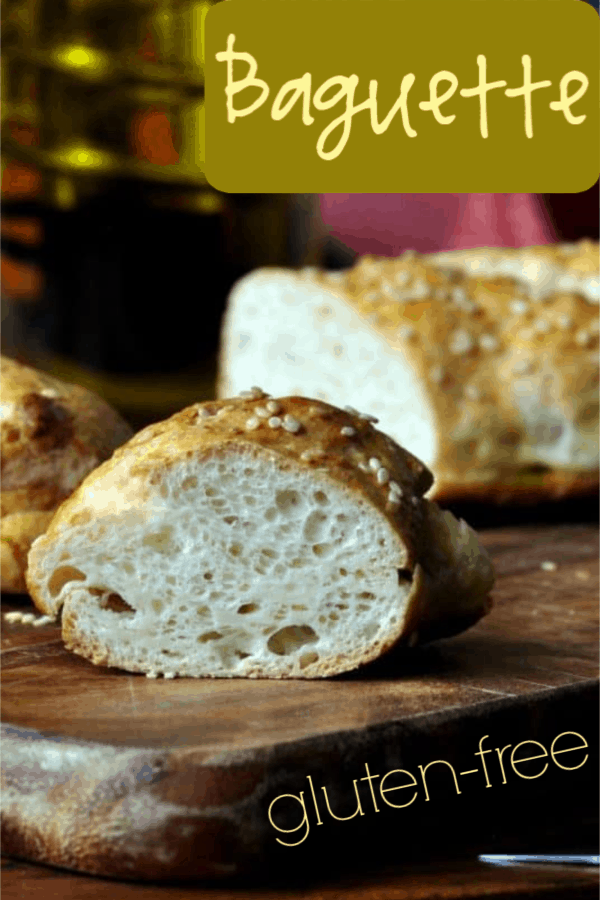
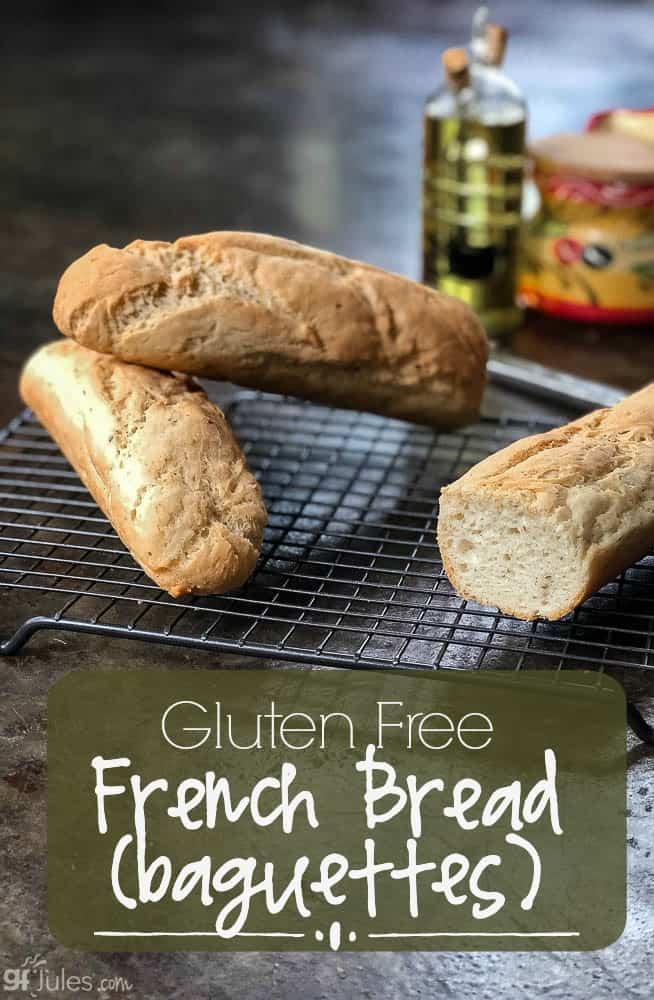
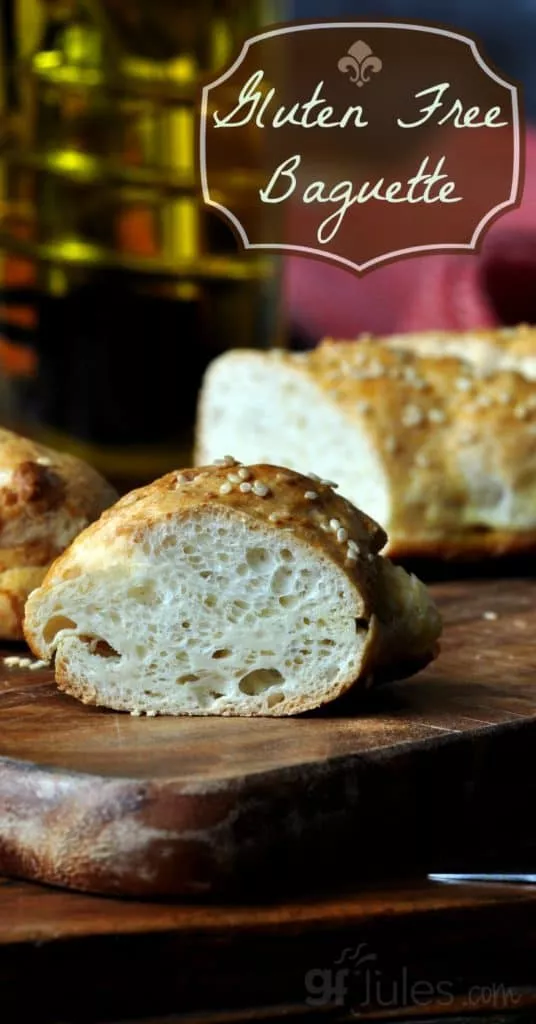


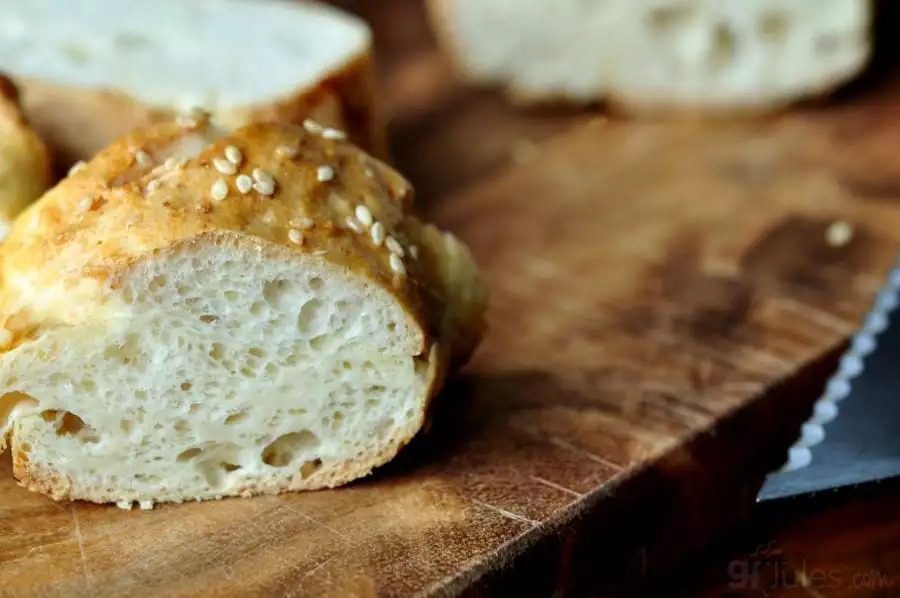












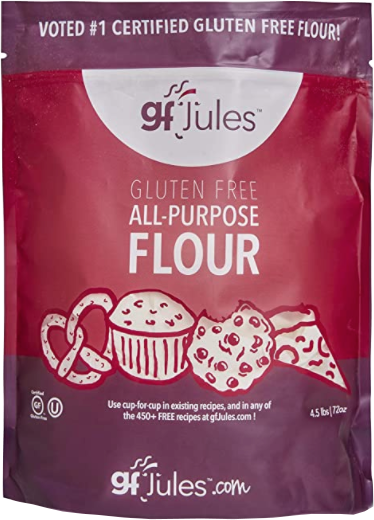
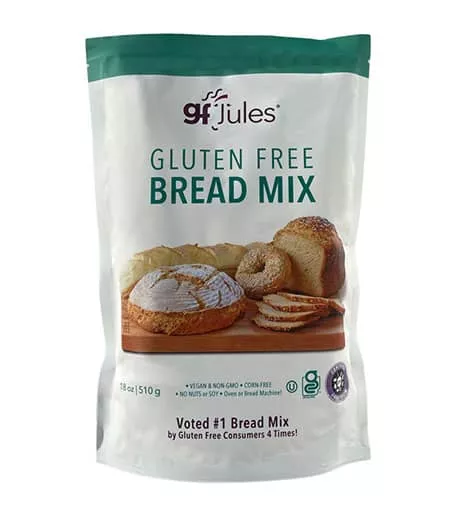

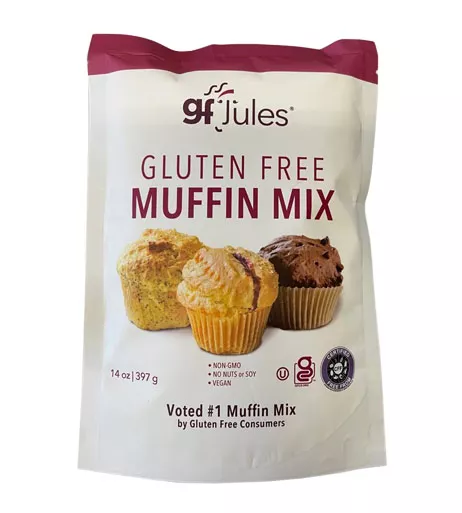


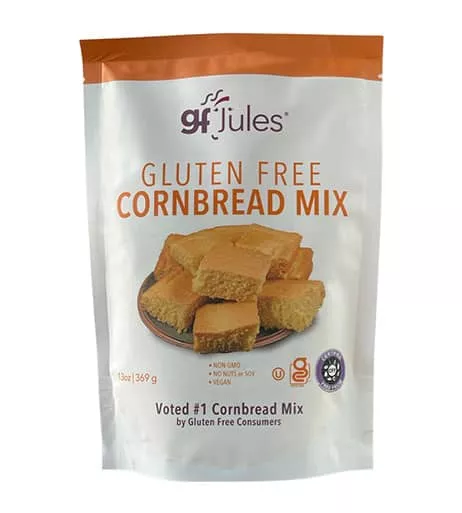



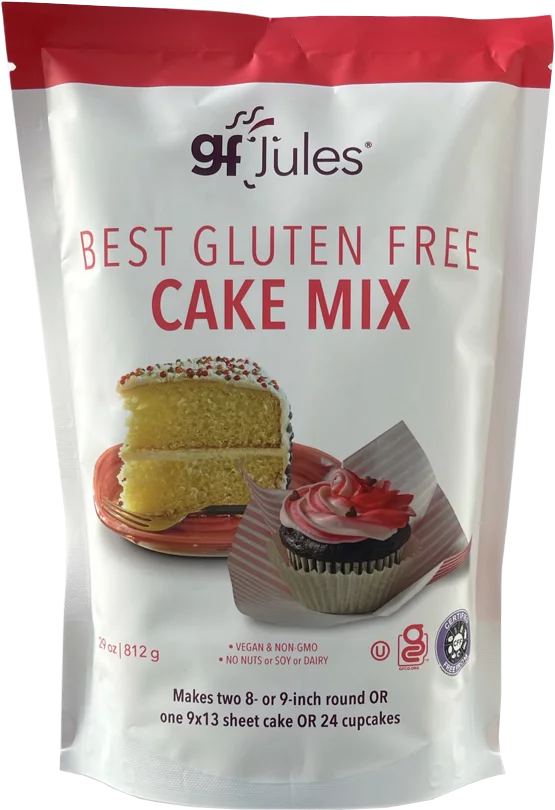


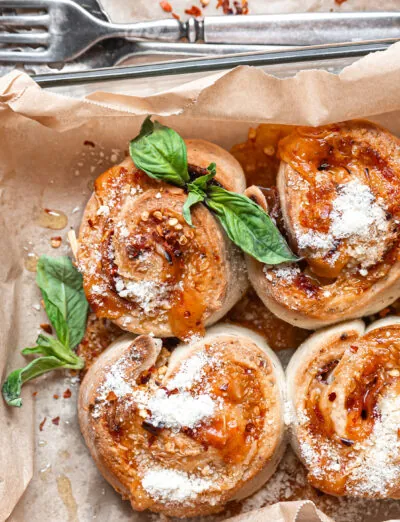
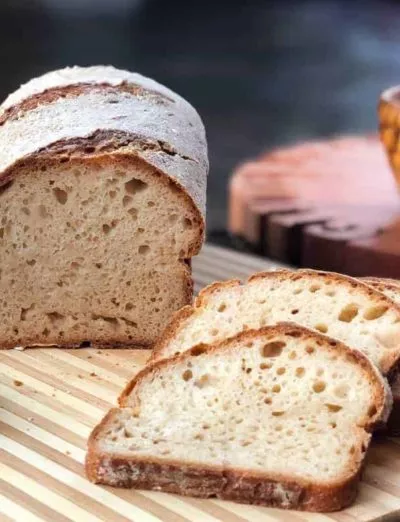







I made this baguette recipe. The texture and flavor is incredible. However the color is really dark. I followed the instructions to a T but it is not anything close to the color above. I did 2 batches one with egg wash and the other one with oil. Help. Looking forward to being able to fix this last tweak. Thank you
Hi Clarisse, I’m thrilled to hear that you loved the texture and flavor of these homemade gluten free baguettes! The color will be easier to tweak than flavor or texture, so you’re on the way!
You can try a couple of things: switch up the milk powder you’re using; use less sugar; change the oven placement of the loaves in your oven to a different rack; cover with foil. Also try turn down the temperature of the oven by 25 degrees for both the beginning and second setting. All ovens bake a bit differently, and yours could just be baking hot. I hope one or more of these helps. Let me know!
~jules
Finally got around to making these “baguettes” with the kit I bought a few weeks ago. How does one “roll’ the dough into a baguette shape? It is flattened like a pancake if it is rolled. I pinched it up into a baguette shape, covered them, and put them in my proofing drawer, warmed then turned off. Turned the main oven on to 500 degrees and waited for it to heat up. In the meantime the raw dough never did rise in my proofing drawer. I put the “loaves” into the prheated oven, turned it down, set the timer, came back, and removed the two night sticks.
They are awfull! Baked up to nearly rock hard, and bitter tasting.
I won’t be buying this kit again, and certainly will not be recommending it to my gluten free friends.
Hi Tricia,
I’m not sure what “kit” you’re talking about? And in this recipe, I don’t recommend rolling the dough out at all, I actually have a video showing how to pipe the dough out using an oiled bag. If you’re using a baguette pan, the sides provide the shape and structure to support the dough as it’s baking and then when the dough is done baking and cooled and set, the bread structure is set and looks as pictured, not flat.
If using a proofing drawer, you don’t turn that off; the drawers are designed to be used while turned on so it maintains a constant warm environment for the yeast to grow and bloom in. You will only turn off a traditional oven, as they are too warm for yeast to proof in if left on (the dough would start to bake in a regular oven, not to proof). If they didn’t rise, it’s likely because you turned your proofing drawer off, so they were not in a warm environment. However, you may also have had yeast that was no longer active? It’s always a possibility.
I’m still unclear on what you were using here, as you referred to a “kit” of some kind.
Give me a little more information and I’m happy to help however I can so you can truly enjoy delicious baguettes next time!
~jules
I love this baguette! I noticed that you’ve changed the oven temp to 450 (was previously 375) and added sugar to the recipe. Those modifications definitely made my baguette brown up much more, but almost too much. It was darker than a typical French baguette would be. I noticed it after about 10 minutes in the oven and quickly turned it down to 350. It turned out well, but I might reconsider that high of an oven temp. Thanks Jules!
Gorgeous, Kate!!!! Good to know your experience with the recipe modifications. You can also move the baguette to a lower shelf in the in the oven so it doesn’t brown as much. The addition of the sugar and the higher temp also help it to develop a crunchier crust, but since you’ve noticed that it was too much for your oven, definitely keep an eye on it next time, or dial it back as you did. Thanks again for sharing your photo and your notes!!!
~jules